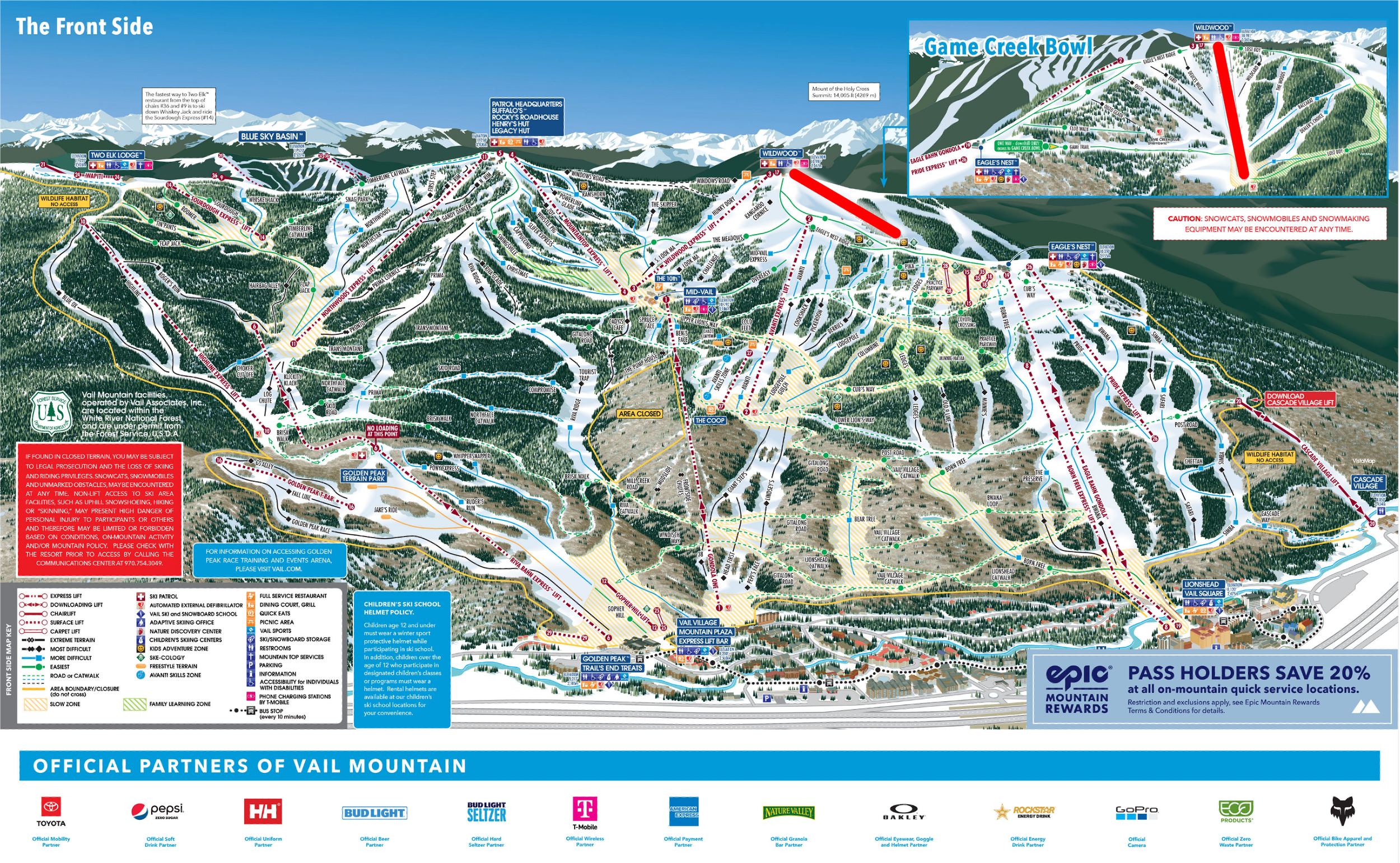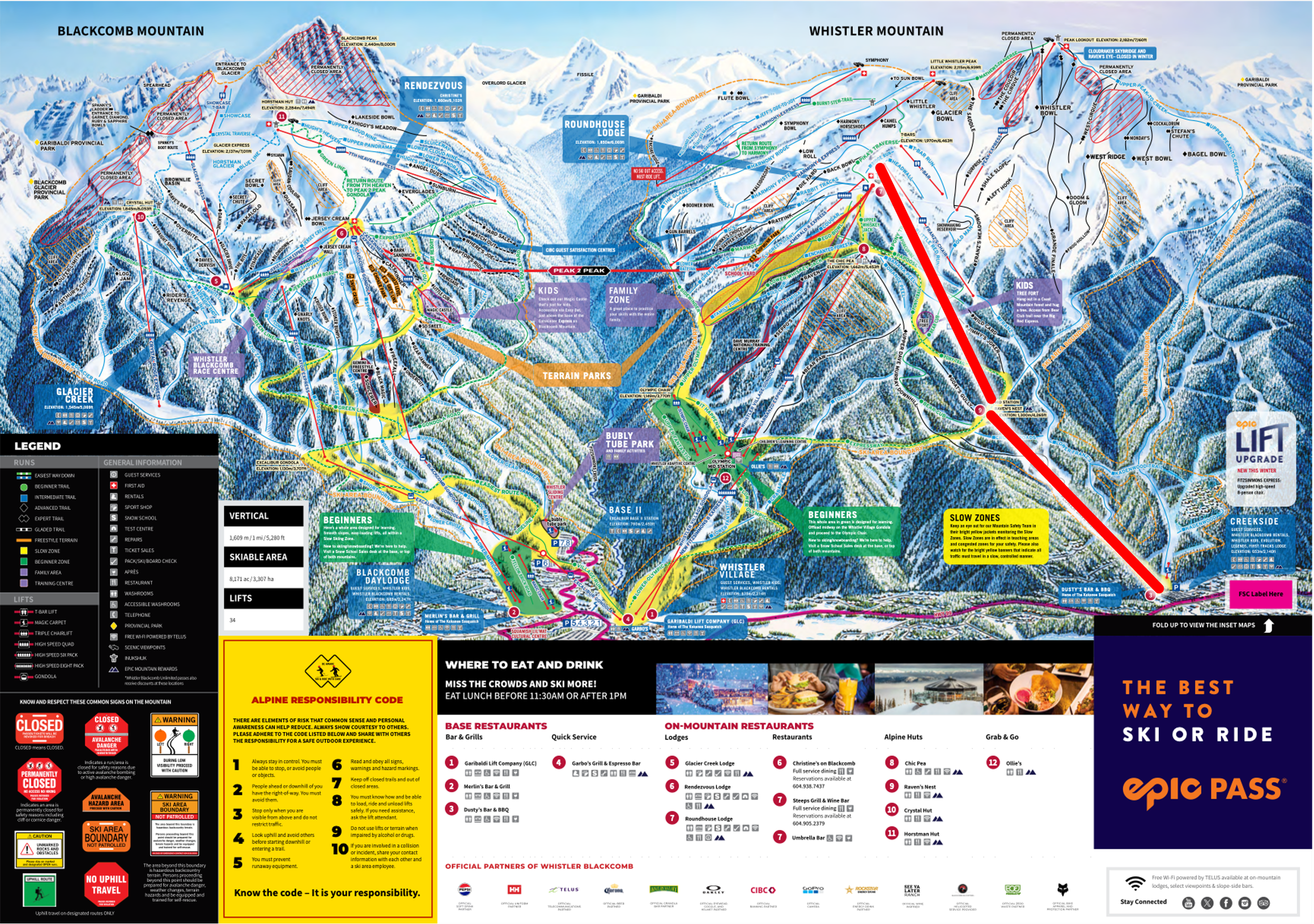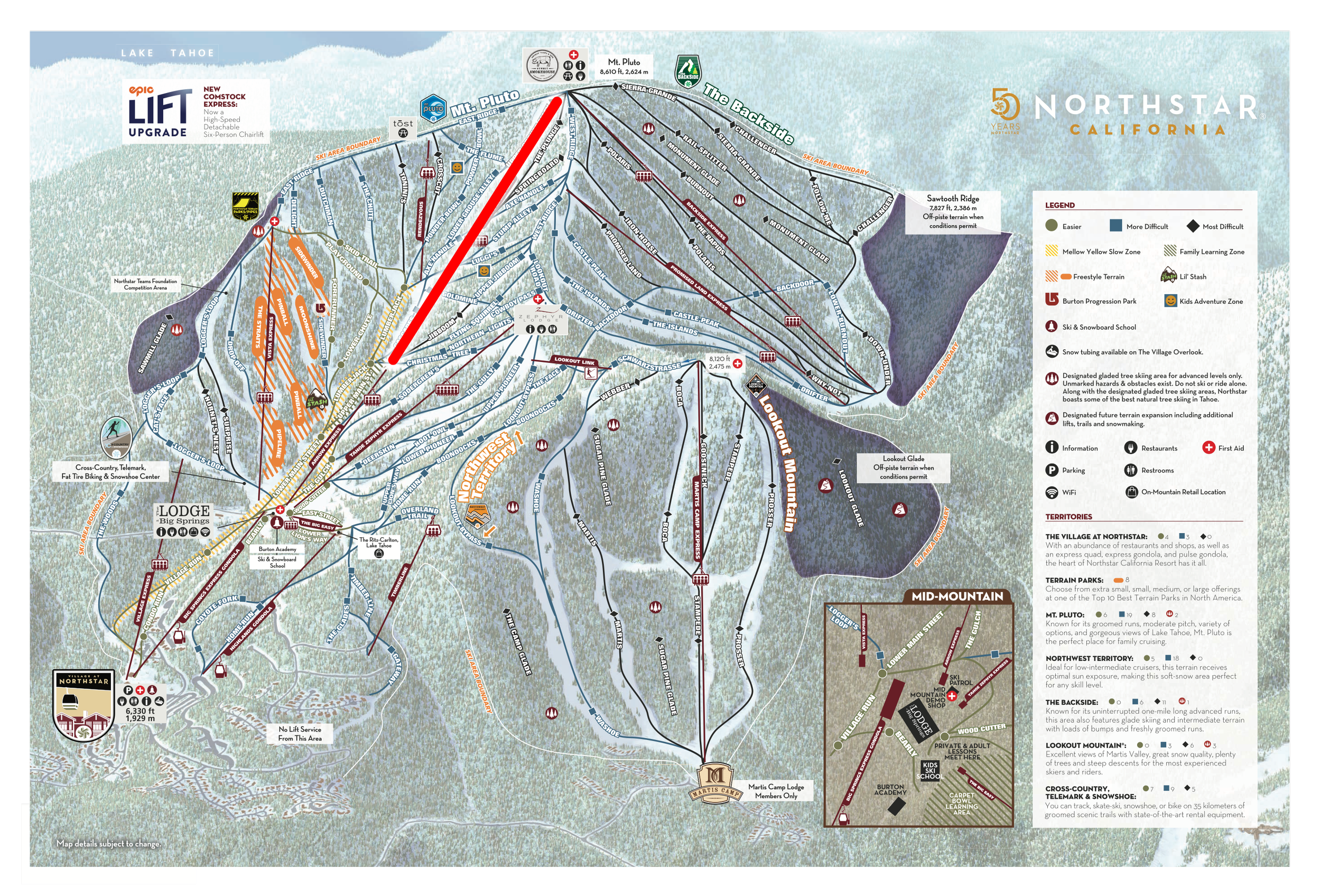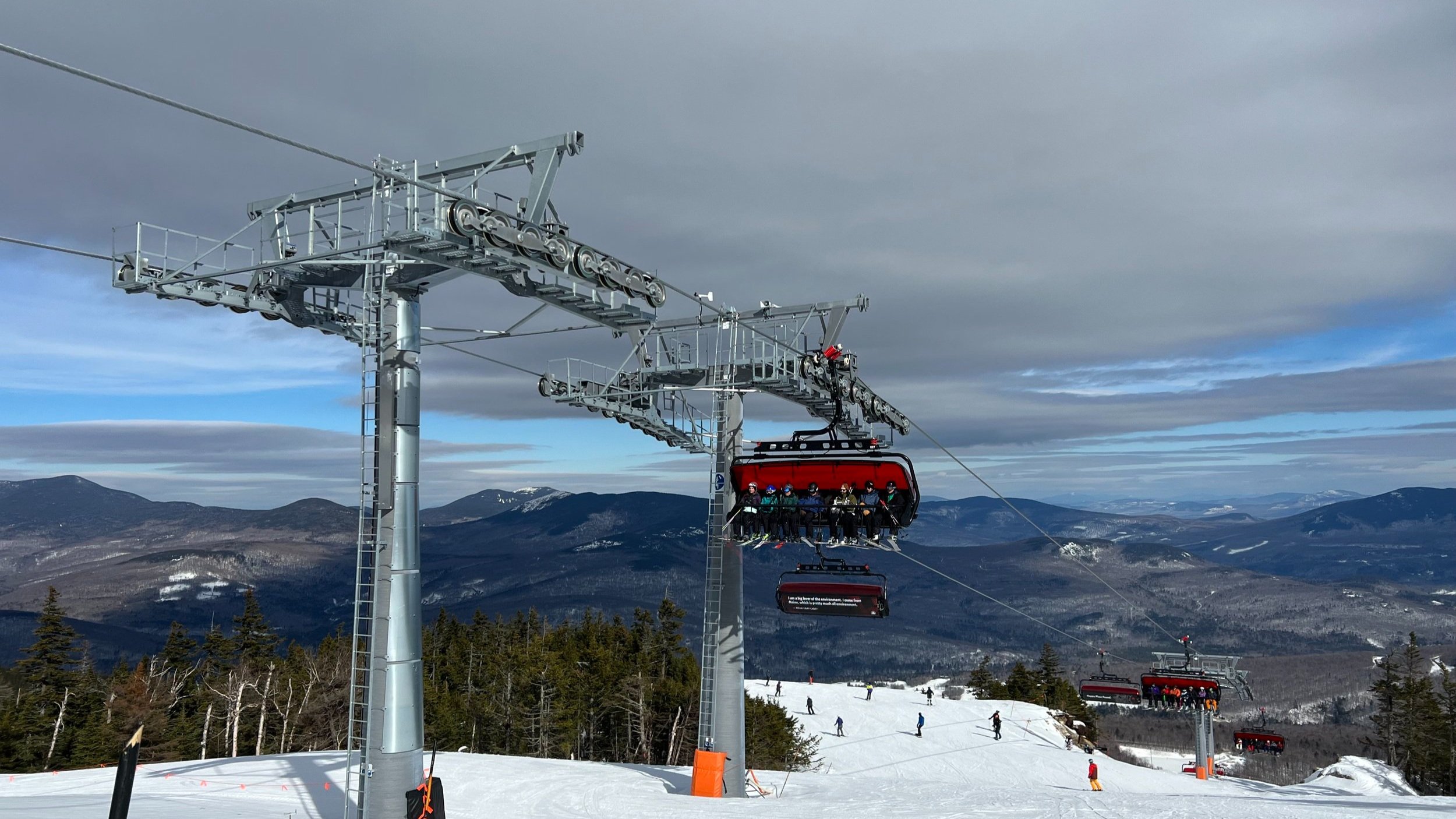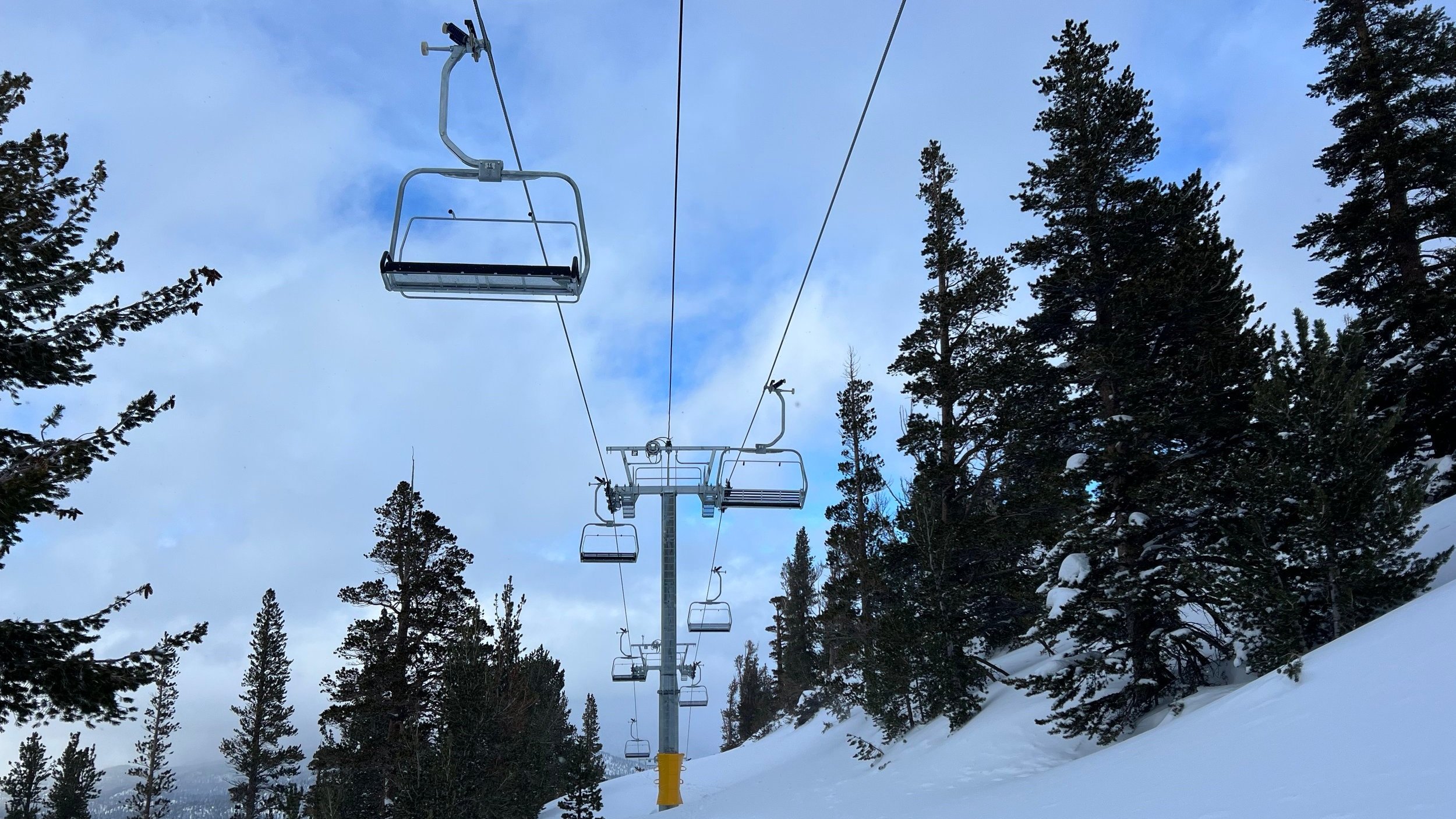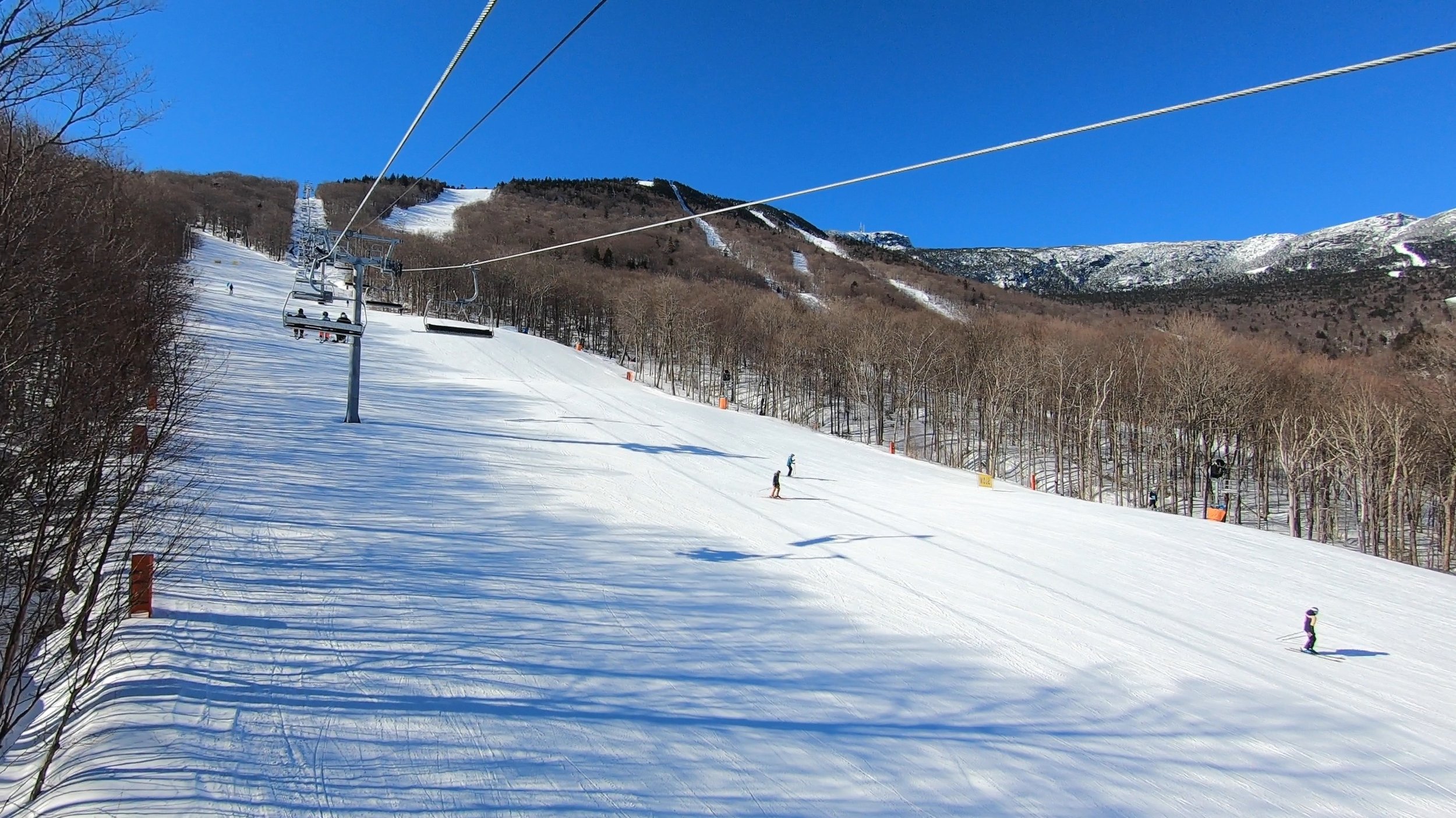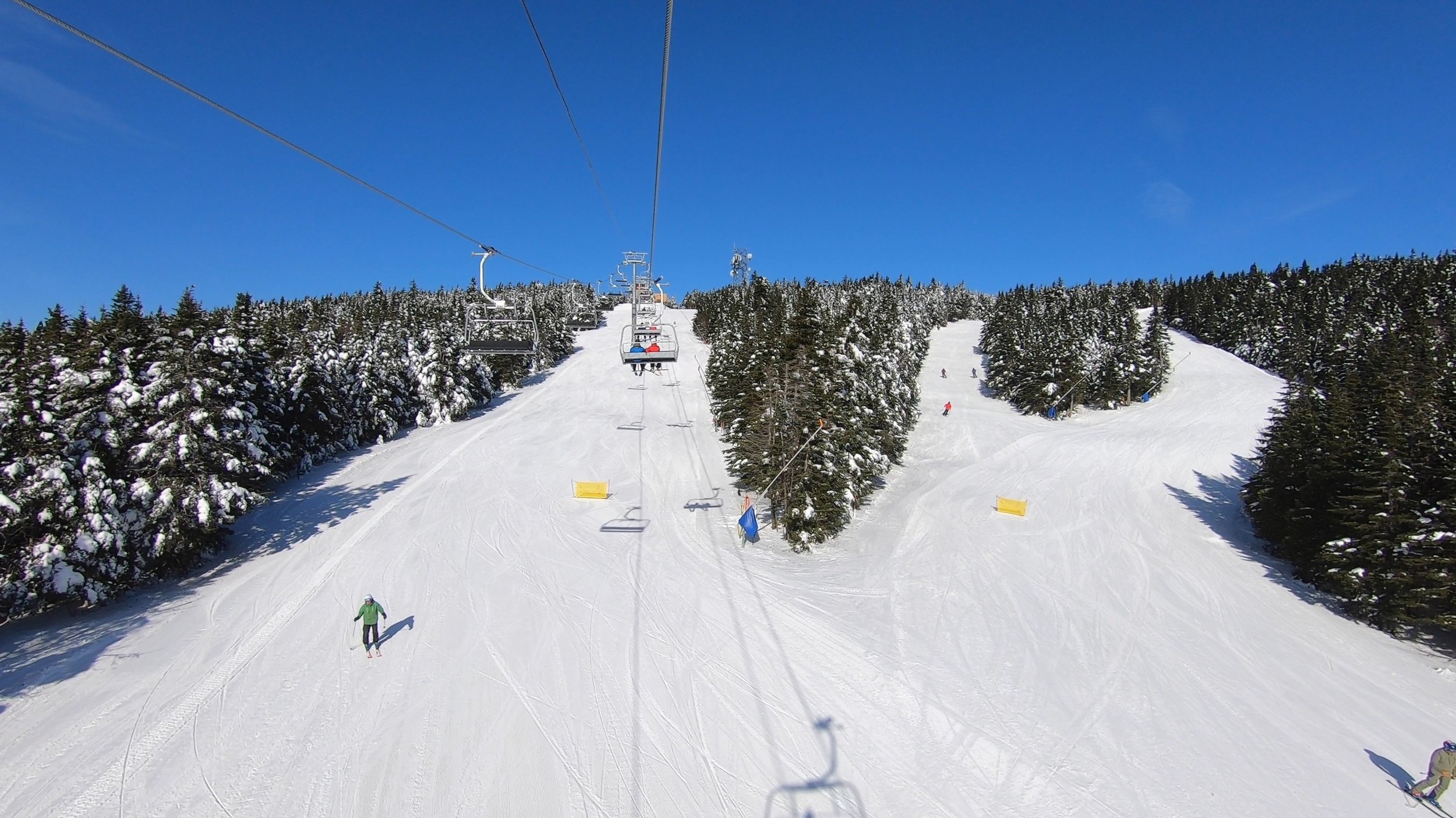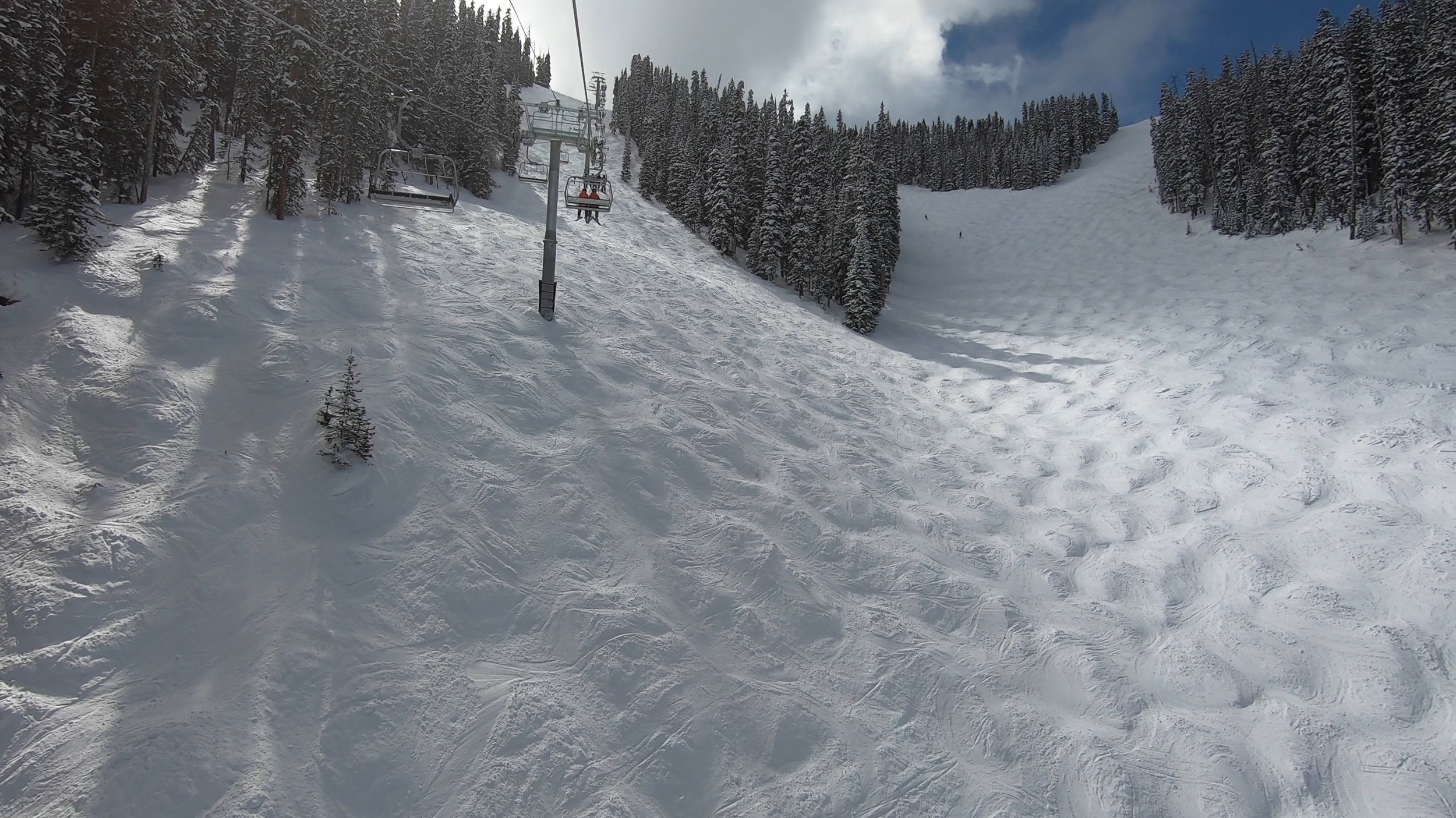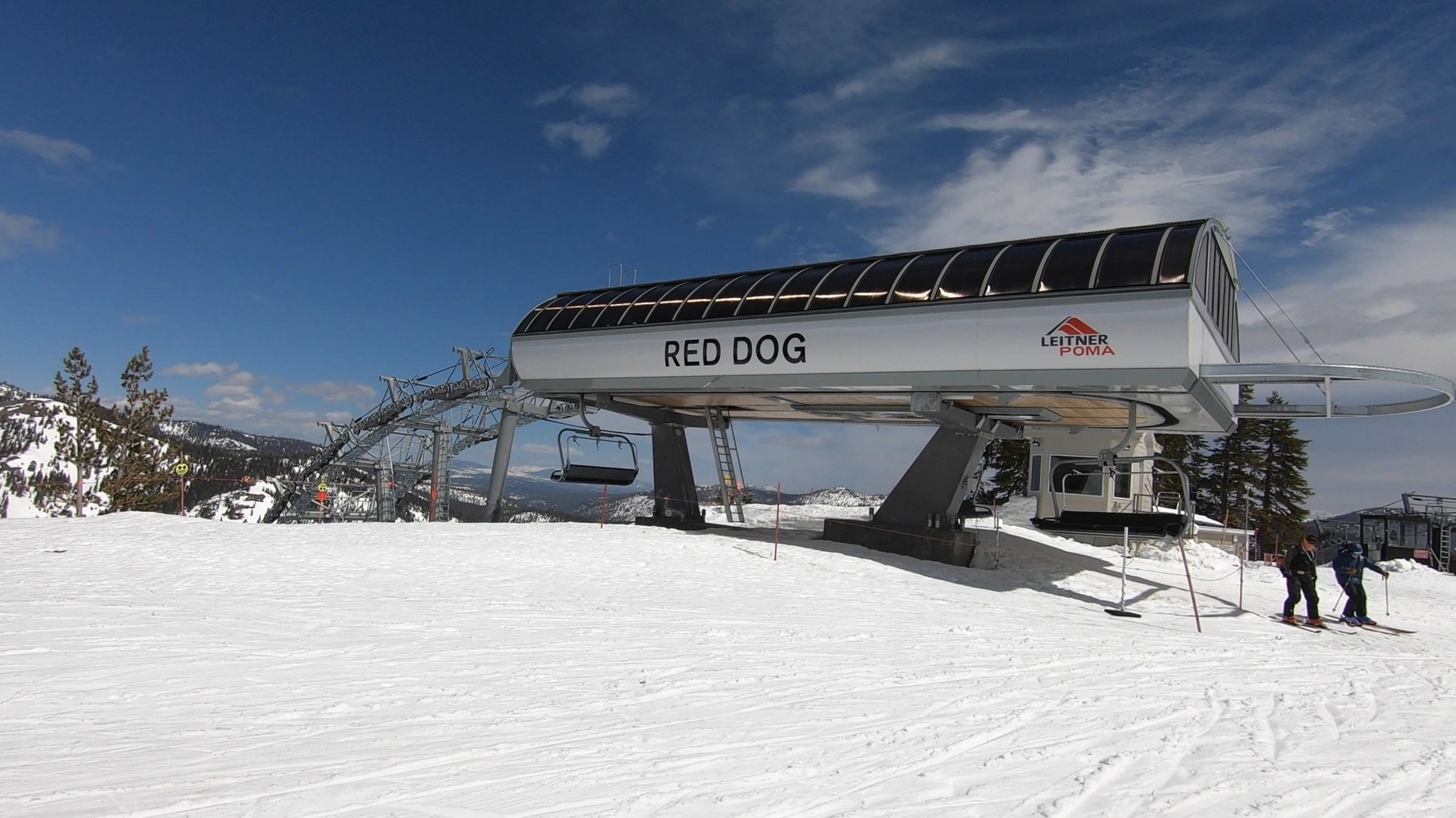2023 Ski Resort Upgrades Ranked: Which Were Hits and Which Flopped?
Over the last few seasons, North American ski resorts have been exploding with investments—and this past winter was the craziest one yet. For 2023, a whopping 25 major projects made their way onto the North American ski scene, bringing everything from terrain enhancements, to lift speed upgrades, to crowd management breakthroughs.
But as you’re planning for this winter, you might be wondering: which ones are best? Which of these are worth going out of the way to visit, and which, if any, aren’t worth the time?
Well, you’ve come to the right place. In this piece, we’ll rank 2023’s major ski resort investments in order of their overall impact, and we’ll highlight the advantages and missed opportunities from each one.
Before we jump in, we do have a few caveats—to keep this list to a reasonable length, we decided to keep it to major lift and terrain changes, so if a resort added a couple of trails or a real estate lift, you won’t see them on this list. Additionally, if a resort completed more than one project last winter, we generally tried to group them together unless there was a major difference in experience impact between the two initiatives.
With that being said, let’s jump in.
#25: Deer Valley Burns Express
First up on this list we have Deer Valley’s new Burns Express, a beginner-oriented lift we can kind of understand the rationale for—but one that leaves a lot to be desired on execution.
Let’s start with the positives: the chair provides the first high-speed lift service in Deer Valley’s learning area, and it offers access to the Mountaineer lift on Little Baldy Peak, which finally allows guests coming from the main base to get to Little Baldy without taking a blue run.
An inset of Deer Valley's trail map. The Burns Express is highlighted in red.
However, the lift is so unintuitively designed that basically nobody except ski school uses it. The chair starts at the top of the bunny hill rather than the base, meaning there’s no good way to get there. The only real option from the main base is to take the Snowflake bunny hill lift, which is low capacity and not designed to be a connector chair. The Burns lift doesn’t end in that useful of an area either, really only providing lappable access to a short portion of one beginner trail.
And while taking the new Burns lift to Mountaineer is much more direct than all the other previously available options, if you’re coming from the main base you need to ride the Snowflake bunny hill lift first, so this so-called “shortcut” isn’t very desirable.
Finally, even though the Burns lift rarely sees traffic, the Gnat’s Eye trail it serves is both pretty narrow and part of the only beginner route from Little Baldy Peak to the main base, making this part of the run prone to significant congestion during even modestly busy times.
So Deer Valley’s new Burns lift didn’t make the resort worse, but it raises more questions than it answers. In our view, they should have spent the money on something more useful.
#24: Breckenridge Rip’s Ride High-Speed Quad
Next up on this list we have Breckenridge’s Rip’s Ride detachable quad, which replaced an ancient double chair and, like Deer Valley’s new lift, also serves a learning-oriented terrain area. As the third detachable lift out of Breckenridge’s Peak 8 base, the new Rip’s Ride chair finally provides direct high-speed lift service to beginner trails on Peak 8, at long last taking some of the burden off of the green runs on jam-packed Peak 9.
However, given the secluded loading area and beginner-centric nature of this chairlift, there’s only so much of an impact it’s had on Breckenridge’s overall experience. While the lift lines on Peak 9’s lower mountain lifts did see some relief, basically nobody above beginner-level proficiency will be riding the new Rip’s Ride lift, diminishing its tangible benefits.
An inset of Breckenridge's trail map, with the Rip's Ride chair highlighted in red.
And even this project did give several learning-oriented runs high-speed lift service, we were a bit perplexed that Rip’s Ride was upgraded over the neighboring 5-Chair, given that Rip’s Ride serves the same pod as the 5-Chair but extends less far up the mountain—and is located in an inconvenient spot away from the main base that requires catwalking.
With a 5-Chair replacement now on track for the following season, the resort seems to be remedying these vices. But as a standalone project, Rip’s Ride hasn’t been as effective as the initiatives higher up on this list.
#19-23: Various Capacity Upgrades
#23: Northstar Comstock Six-Pack
#22: Vail Game Creek Six-Pack
#21: Alta Sunnyside Six-Pack
#20: Whistler Blackcomb Creekside Gondola
#19: Whistler Blackcomb Red Six-Pack
Next up, we have five lifts that essentially serve the same purpose: replacing an existing high-speed lift with another higher-capacity machine. Detachable six-packs replaced Northstar’s Comstock Express quad, Vail’s Game Creek Express quad, Whistler Blackcomb’s Big Red Express quad, and Alta’s Sunnyside high-speed triple, while a 10-passenger Creekside Gondola replaced Whistler’s outgoing 6-passenger model. Every one of these lifts shuffles guests up the mountain more efficiently than its predecessor, and in the cases of Northstar’s Comstock and Vail’s Game Creek, the new lifts provide much-needed reliability enhancements over the previous thirty-plus-year-old models.
However, all of these upgrades are more practical than flashy, and besides perhaps slightly reduced wait times, the average guest probably won’t even notice the redesigned lift setups. There’s no doubt they’re all effective, but the investments higher up on this list are much more blatant.
When it comes to the order of these five upgrades themselves, we’re placing Comstock at the bottom because Northstar destroyed some of its only seriously technical terrain in order to install it. However, we’ve arranged the other four based on how effective they’ve been at addressing crowds, ranging from Vail’s Game Creek, which has never been particularly busy so hasn’t had a huge impact in this regard, to Whistler’s Big Red, which sits in a critical mountain area and has notably reduced the frequency of unacceptably long lift lines.
#18: Waterville Valley Tecumseh Express
Next up on this list we have Waterville Valley’s Tecumseh Express, a brand new bubble six-pack that replaced the White Peaks Express quad in a very similar alignment. Just like the resorts we covered in the last section, this New Hampshire resort faced an aging high-speed quad in need of replacement—but unlike those resorts, Waterville decided to add a few new bells and whistles to their upgraded lift. The new Tecumseh bubble lift provides a comfortable ride up the resort’s most popular terrain, and the bubbles especially come in handy on the frigid, windy days that this part of New Hampshire is known for.
Waterville Valley's trail map, with the Tecumseh Express lift line highlighted in red.
But at least for its inaugural season, Waterville’s bubble lift had its fair share of teething problems. The six-pack’s manufacturer had never constructed a lift in the North American market before, meaning Waterville Valley was essentially a guinea pig for the lift’s design. As such, several substantial malfunctions occurred throughout the winter, with stoppages of up to half-an-hour that became unfortunately common occurrences. These incidents lessened in frequency as the season went on, but for such an important lift that nearly everyone at the resort rides, these circumstances made for a less-than-enjoyable experience. Nobody wants to spend this much time suspended on a chairlift—even if the seat is covered.
Waterville Valley’s new bubble lift brings several tangible benefits, but it’s hard to place an investment that’s still sorting out as many kinks as it is any higher on this list. We’ll be on the lookout this season to see if the lift has upped its reliability game.
#17: Steamboat Wild Blue Gondola Stage 1 and Greenhorn Ranch Express
This past season, Steamboat introduced a series of upgrades as part of a massive multi-stage capital improvement initiative. Most notably, the remote Colorado resort completed the first leg of the Wild Blue Gondola, a 10-passenger lift that will soon extend all the way to the top of Sunshine Peak. The resort also added a brand-new learning area at the top of this gondola stage complete with a whopping 1,200-foot-long high-speed quad.
Steamboat’s 2022-23 trail map, with the Wild Blue Gondola Stage I highlighted in red.
As they existed during this past season, these investments didn’t do much unless you were a true beginner. But the first leg of the gondola did bring about a few interesting circumstances, providing a third out-of-base lift option and allowing guests who opt not take the original gondola to mid-mountain to stay insulated from the elements for the first leg of the trip up.
On their own, the first leg of the Wild Blue Gondola and associated beginner upgrades aren’t much of game changers for Steamboat—and especially in the case of the gondola, they would be questionable investments if it weren’t for the resort’s future plans. But outside this retrospective exercise, it doesn’t really matter, because the second Wild Blue Gondola leg will be complete for the upcoming 2023-24 season, turning this lift into a substantially more important machine.
#16: Mount Rose Lakeview Express
Next up we have Mount Rose’s Lakeview Express lift, a new high-speed quad on the resort’s front side that replaces an aging triple lift. The new Lakeview lift could easily be viewed as just a helper lift upgrade, but it brings some tangible benefits besides crowding relief for the Northwest Express six-pack.
Mount Rose’s trail map, with the Lakeview Express highlighted in red.
While it still doesn’t extend all the way to the resort summit, the new high-speed quad offers two notable benefits. First off, it sits in an extended alignment from the old lift, providing much better views of Lake Tahoe from the summit and actually living up to the namesake its predecessor arguably fell short at. Secondly, since there are no easy ways down from the true resort summit, the Lakeview lift brings high-speed service to beginner terrain for the first time in Mount Rose’s history.
The Lakeview lift doesn’t exactly transform Mount Rose’s standing on the Tahoe resort stage, and it doesn’t add high-speed lift service to any new intermediate or harder terrain. But for regional visitors who are still beginners—and anyone who visits on weekends or holidays—it’s hard not to notice the value.
#15: Loon Seven Brothers Express
Next up on this list we move back to New Hampshire, where we have Loon’s Seven Brothers Express lift, which, like Mount Rose’s Lakeview, is a new high-speed quad serving in a helper capacity. Like with the Lakeview upgrade, the new Seven Brothers Express provides relief for a critical lift—in this case, Loon’s overworked four-passenger gondola—and also replaces an aging fixed grip triple.
Loon’s 2022-23 trail map, with the Seven Brothers Express highlighted in red.
But we’re giving this upgrade a leg up over the Lakeview thanks to the flow benefits it brings to the mountain, finally allowing guests to quickly get from the Octagon Lodge base to the top of North Peak without relying on the gondola or an undesirable slow lift. Along with the North Peak Express Quad, it’s now much faster to get directly to the summit of North Peak than in previous seasons. Finally, the new Seven Brothers setup makes it much more desirable to lap Loon’s terrain parks.
Several other upgrades last year had more of an effect on their respective resorts’ overall experience, but for a lift that didn’t even add high-speed lift service to any new terrain, the Seven Brothers lift has done a whole lot.
#14: Killington K-1 Base Lodge
Next up on this list we have this year’s one major facility upgrade—the new Killington K-1 Base Lodge. The rebuilt, three-story base lodge is 50% larger than the old one, and it brings grab-and-go dining, a full-service bar, and direct views of Killington’s slopes.
The updated lodge looks a lot more fancy than the old one, with fireplaces, the first escalators of any Vermont ski resort, and shuffleboard tables. But perhaps more importantly, the updated lodge is significantly better designed than the old one.
Capacity is ample at the new K-1, with a noticeably higher quantity of seats and tables available than the old lodge. This is especially critical given that Killington’s other popular on-mountain facility, the Peak Lodge, is always hard pressed for seating. In addition, food services are much more intuitive in layout than the old K-1 base lodge. Rather than the horrible old setup, where you had to wait in the same line to access all the food, you can just go to whatever station you want and order much faster.
So while base lodge upgrades aren’t typically as exciting as new lifts or terrain expansions, Killington’s new K-1 has arguably outdone many of last year’s investments that fall into those aforementioned categories. Much improved seating capacity, a significantly more intuitive food layout, and a more welcoming ambience have combined to offer a very noticeable upgrade from previous seasons.
#13: Sunday River Jordan 8
For the 2022-23 season, Sunday River performed a major upgrade for one of its workhorse lifts. The popular Maine resort replaced its outgoing Jordan high-speed quad, which dated back to 1994, with the Jordan 8, a state-of-the-art bubble eight-pack lift in a very similar alignment.
This high-class lift is a substantial enhancement for the resort’s westernmost terrain pod, bringing isolation from the elements and stitched, heated seats. And while the previous Jordan lift was already a high-speed quad, the new Jordan 8 runs even faster, chipping an additional 15% off the already-brisk ride time. The new lift’s ride is notably complacent too, with high-class mechanical components dampening noise and vibrations over towers.
Sunday River’s trail map, with the new Jordan 8 highlighted in red.
However, the new setup has come with a handful of drawbacks. First off, Sunday River hasn’t really figured out how to efficiently manage loading an eight-place lift yet, and during this past year’s strategy of shuffling 16 people through RFID gates at a time, staff struggled to maintain queues—and as a result, didn’t consistently load chairs to capacity.
In addition, Sunday River had to do a lot of land alteration to fit the massive Jordan 8 along its lift line, resulting in some changes to the expert-level terrain the chair runs along. Some people will appreciate the less intricate nature of the altered trail, while others may miss the more reliable coverage and steep, narrow drop-in that made for one of the toughest trail entries at the resort.
Finally, despite all the bells and whistles of the new lift, those who visited Sunday River this year might have balked at the decision to upgrade Jordan over some critical lifts in more central areas, especially the aging Barker high-speed quad. However, it is worth noting that Sunday River has announced plans to replace the Barker lift with a bubble six-pack for the upcoming 2023-24 season. As a result, this misdeed will be addressed in large part.
While we weren’t sold on the priority of Jordan 8 versus other potential Sunday River projects, it’s hard not to appreciate the benefits from this state-of-the-art machine. The Jordan 8 could use some crowd strategy, but the upcoming Barker project (and, with any luck, better queue strategy) will hopefully address that factor somewhat.
#12: Palisades Tahoe Base-to-Base Gondola
Perhaps one of the most hotly anticipated lift projects ever, the Palisades Tahoe Base-to-Base Gondola finally connects the Palisades (formerly known as Squaw Valley) and Alpine Meadows sides as one fully lift-served resort.
When everything is going smoothly, this massive lift allows guests to forego a shuttle bus and ride from one resort section to the other without even thinking about it. In addition, the gondola provides a second uphill option to access KT-22, which helps a little bit with capacity on busy days.
Palisades Tahoe’s trail map, with the Base-to-Base Gondola highlighted in red.
But after all the hype, a number of circumstances make the Base-to-Base Gondola disappointingly impractical. First of all, the gondola ride is very long—at 16 minutes between the two resort bases, it’s actually longer than the shuttle bus if you time the bus schedule right and the roads are clear. And judging the gondola by its intended run speed is still probably being a bit too generous, as the lift is incredibly wind susceptible, making for conditions that often force it to run at 75% speed. This poor design also results in all-too-common wind holds—even when other lifts have no issues operating—so if you decide to go from one side to the other, you might not be able to get back to where you started.
When all is said and done, the Palisades Tahoe Base-to-Base Gondola feels like more of a transportation option between two separate resorts than a sensible glue linking all of Palisades Tahoe’s terrain as one continuous area. The lift is genuinely useful for Palisades on-site hotel guests who want to visit Alpine Meadows—and maybe other first-time guests will take it once for the novelty—but it’s just too long and wind-hold-prone to make visitors actually want to split their days across the Palisades and Alpine sides.
#11: Heavenly North Bowl Express
Next up on this list we move to South Lake Tahoe, where Heavenly received its first high-speed lift upgrade in fifteen years. The new North Bowl Express quad, which replaces a nearly four-decade-old triple chair of the same name, provides much more desirable access to solid advanced-level glade terrain on Heavenly’s lower-mountain Nevada side—and thanks to its fairly hidden location, it rarely sees lift lines.
Heavenly’s trail map, with the North Bowl Express highlighted in red.
However, the North Bowl Express falls behind the next few projects on this list not because there’s anything wrong with the lift itself, but because of a crucial missed opportunity. While rumors had swirled that the resort would also replace its Boulder beginner lift as part of this project, these mullings did not come to fruition. The Boulder/North Bowl route is really, more than anything else, a way to get from the Boulder parking lot to main resort areas. Given this obvious use case, it’s perplexing that the North Bowl Express wasn’t a two stage lift that replaced both Boulder and North Bowl.
Ultimately, the North Bowl Express is a solid improvement over the old triple, but its hidden location and the lack of a corresponding Boulder upgrade limit its practicality. We’ll be on the lookout for additional investments on Heavenly’s lower-mountain Nevada side in future seasons.
#10: Vail Sun Down Express
Next up we have Vail’s Sun Down Express lift, which brings additional lift service to its famed Back Bowl terrain. This new high-speed quad offers a second option out of the High Noon area and provides direct lift service within the Sun Down Bowl for the first time ever.
While Vail technically hasn’t added any new terrain with this upgrade, the new lift setup makes the Sun Down area much more easy to lap, effectively allowing it to function as its own terrain pod—whereas in previous seasons, it took at least two indirect lifts to do repeat laps in this area. It’s now much easier to spend time in some of Vail’s best advanced and expert bowl terrain, which makes this already-massive resort feel bigger. And perhaps even more importantly, the Sun Down lift provides significant relief for the neighboring High Noon chair, which is no longer the dreadful chokepoint it used to be on peak days.
Vail’s Back Bowls trail map, with the Sun Down Express highlighted in red.
However, the new lift’s convenience does come with a few consequences. Sun Down was historically one of Vail’s least touched terrain areas thanks to the isolation of its terrain, but as one might expect, the handier lift setup means the area gets tracked out faster. In addition, the Sun Down Catwalk, which catches the traffic from essentially every run in the Sun Down zone at the bottom of the terrain pod, has seen a substantial uptick in congestion as a result of the new lift setup.
But while the Sun Down Express isn’t perfect, the new lift allows much more convenient access to the wide-open bowl terrain it serves, and we expect the vast majority of guests spending time in this area to notice a material experience difference.
#9: Stowe Sunrise Six
For the 2022-23 season, Vermont’s Stowe installed its first ever six-pack chairlift. The resort replaced its 35-year-old Mountain Triple lift with the Sunrise Six, bringing a much faster ride time and slightly adjusted lift line to allow for easier egress from the Mansfield base lodge.
On the surface, the Sunrise installation doesn’t add high-speed service to any new terrain—in fact, all of its marked trails can also be accessed from the FourRunner high-speed quad. However, a number of the lift’s design circumstances bring about notable experience improvements.
Stowe’s trail map, with the Sunrise Six highlighted in red.
First off, it’s the first high-speed lift to offer direct access to any green terrain at Stowe at all, a previous notable omission; as a result, beginners who don’t feel comfortable skiing or riding blues will benefit substantially from the saved ride time of the new lift.
In addition, anyone who stops in for a break at the Mansfield base will also appreciate the Sunrise chair. The Mansfield Base Lodge sits very low on the mountain, and in previous seasons, guests would have to hike up from this popular building to get back to the lifts. However, the Sunrise lift’s alignment has been extended down to the lodge itself, allowing guests to get back on the mountain with no hiking or walking required. This crucial benefit is really what helps Stowe’s helper lift upgrade top those we already mentioned at Loon and Mount Rose.
So while the Sunrise Six may come across as just a redundant lift on the surface, the lift replacement has brought about enhancements in beginner progression and amenity access that remove many of the resort’s previous annoyances. Sunrise has also pulled some of the crowding away from the FourRunner chair and created a high-speed terrain pod that’s typically less crowded than the others on the mountain. The projects higher up on this list may have brought a larger quantity of experience improvements, but nearly all Stowe guests will benefit, even if indirectly, from the upgraded setup.
#8: Whitefish Snow Ghost Express
This past season was a big one for Montana’s Whitefish ski resort, which, like Stowe, also installed its first-ever six-pack chairlift. The Snow Ghost Express, also known as Chair 4, runs in a completely different alignment from its triple chair predecessor, providing the first direct high-speed access out of the main base.
Whitefish's Front Side trail map, with the Snow Ghost Express highlighted in red.
While Whitefish has historically suffered from a poorly-thought-out Front Side lift setup, the Snow Ghost Express completely transforms the way the mountain works. Previously, getting from the main base to any point higher up at the resort involved having to take the slow Chair 6 lift to the resort’s village. But by providing direct high-speed lift service out of the main base area for the first time, the new Chair 4 substantially reduces the burden on Chairs 1 and 6 and makes it much easier to lap lots of lower-mountain Front Side terrain.
The Snow Ghost Express doesn’t extend all the way to the summit, meaning Front Side guests will still have to take Chair 1 to get there, but it allows guests to get to East Rim and Hellroaring Basin without any other lift dependencies. Chair 4 is the first lift most guests will see when they get to Whitefish, and pretty much everyone who’s not a beginner will notice a significant impact from this installation.
#7: Mount Snow Sunbrook and Sundance Express Lifts
This past season, Vermont’s Mount Snow saw its biggest suite of investments in over a decade.
First off, the resort replaced the Sunbrook lift with a detachable quad in the same alignment, finally bringing high-speed lift service to this popular area. Additionally, Mount Snow replaced both its Sundance and Tumbleweed lifts with a detachable six-pack, adding a fourth high-speed lift on the front side of the resort.
Mount Snow’s trail map, with the Sundance lift highlighted in red and the Sunbrook lift highlighted in orange.
Starting with the Sunbrook replacement, the new lift may have been the most highly-anticipated high-speed upgrade in the state of Vermont—and we’re glad to affirm it delivers. The old ride took an especially sluggish nine minutes to lap modestly long blue trails, making it an unpopular alternative to the rest of Mount Snow’s terrain—and, thanks to its exposure, an uncomfortable one on cold days. The new lift takes just four-and-a-half minutes to ride, cutting the ride time down by half and making for a much more enjoyable experience. Sunbrook’s sunny, south-facing slopes make for a distinct feel versus Mount Snow’s other intermediate runs, and the more inviting lift ride makes the resort a better overall package for guests of this proficiency.
Moving on to the new Sundance six-pack—this lift may come across as just another reliever for Mount Snow’s massively popular main face, but it brings a number of understated benefits. The lift actually sits in a slightly different base area than Mount Snow’s three other frontside detachables, allowing those starting the day at the Sundance base lodge to immediately get on a high-speed lift rather than taking the old Sundance triple or engaging in a lengthy walk over to the other chairs.
The lift’s hidden location also means it doesn’t see quite the same traffic as the other frontside lifts, and the six-pack can often be a way to escape from the crowds on busy days. The Sundance lift only extends about 80% of the way up the mountain, but it provides access to most of the same terrain as its neighbor chairs and offers much more convenient lappable access to the southernmost blues in this area of the resort.
Mount Snow still has its fair share of downsides, including sizable weekend and holiday crowds, fairly ordinary terrain, and a lack of high-speed lift service in its advanced North Face area. But the Sunbrook and Sundance lift upgrades have done quite a bit to enhance the lift and crowd flow experiences on the mountain. While these upgrades aren’t exactly enough to propel Mount Snow above the best southern-central Vermont resorts, the vast majority of guests—especially those of intermediate proficiency—will very much appreciate the impacts.
#6: Sierra-at-Tahoe Fire Restoration
A few years ago, California’s Sierra-at-Tahoe was ravaged by every ski resort’s worst nightmare: a massive wildfire. Large portions of the mountain saw damage from the August 2021 Caldor Fire, and the resort essentially remained closed for a full season to clear out the damage.
But following years of recovery work, Sierra finally reopened for regular operations for the 2022-23 season. However, the new footprint has changed substantially compared to the pre-fire Sierra, and large swaths of tree terrain have been replaced with wide-open bowls.
Sierra-at-Tahoe's 2022-23 trail map shows the new bowl areas resulting from the tree clearing.
On the plus side, the fire damage has now given way to one of the largest bowl areas in the region, with West Bowl providing 1,500 continuous vertical feet of wide-open terrain—including some that’s uniquely intermediate-pitched in nature. In fact, given the tree clearing in other areas, it’s now possible to access bowl terrain from basically every lift.
However, the wide-open nature of Sierra’s bowl terrain has had a handful of less-than-desirable side effects. The much more open footprint has significantly increased wind exposure in the West Bowl area, and some previously hidden powder stashes are now scooped up much faster. And while a few glade areas do still exist, tree terrain is a lot harder to come by than it used to be.
So Sierra-at-Tahoe’s fire damage means that some of the best tree terrain in Tahoe has been relegated to the history books. But it’s remarkable that a resort whose future was wholly uncertain a year-and-a-half ago has not only made a full operational recovery, but has actually gotten better in a number of circumstances. Everyone who visits Sierra will blatantly notice these changes, but even if they were involuntary, we’re glad to report they’ve increased the appeal of this local Tahoe mountain.
#5: Telluride Plunge Express
This past winter, Telluride received what was probably the most overdue lift replacement on the mountain. This remote Colorado resort replaced its slow, fixed-grip Lift 9, also known as the Plunge lift, with a brand-new high-speed quad in what’s generally the same alignment.
When it comes to riding the new Plunge lift, the experience is a monumental improvement over the old one. The ride time has gone down from an agonizing 13 minutes—which was among the longest anywhere in North America—to a much more palatable six-and-a-half. Lift 9 services a significant percentage of Telluride’s expert-level below-treeline terrain, and this upgrade makes it much more enjoyable to lap long, demanding bump runs. And while Telluride has never seen notable lift lines, the new Plunge setup has helped spread crowds away from other lifts, especially in upper-mountain areas.
Telluride's trail map, with the Plunge lift upgrade highlighted in red. Note that Giuseppe’s Restaurant, featured at the top of the lift, is not operational as of late 2023.
However, while it broadly improves the Telluride experience, the Plunge upgrade did result in one important casualty—Giuseppe’s Restaurant. This small but wholesome restaurant at the top of the old Plunge lift was removed as part of construction, and never got restored. The nearest indoor on-mountain restaurant is now a fair detour away at either Gorrono Ranch or Allred’s, which can be a bit of a pain for those spending time in this area at the resort. Telluride does plan a replacement for this restaurant for the upcoming winter, but we haven’t heard any updates from the resort yet, so it’s unclear if and when the new facility will be open.
But while the restaurant loss is a disappointment, there’s no doubt that the Plunge upgrade has been a major net positive for Telluride, and we’d take repeat laps on the high-speed Lift 9 over the old setup any day. Few other resorts offer terrain with the same combination of stunning views and cardio-including bumps as Telluride’s Plunge area, and thanks to the new, modern lift, we expect guests to no longer take this sort of terrain for granted.
#4: Jackson Hole Thunder High-Speed Quad
This past winter, Jackson Hole performed a substantial upgrade to one of its most popular lifts. The popular Wyoming resort upgraded its Thunder lift to a detachable quad, bringing high-speed lift service to the upper-middle section of Rendezvous Peak.
Jackson Hole's trail map, with the new Thunder lift highlighted in red.
The Thunder upgrade finally brings one of the few benefits Jackson Hole previously lacked: lappable high-speed lift service on truly demanding terrain. While many of Jackson Hole’s other lifts have been high speed for years, they service areas that are chiefly beginner or intermediate in nature. The high-speed quad cuts Thunder’s ride time in half, making for an especially brisk ride time of less than four minutes—one of the fastest trips at any major ski resort in North America. Many guests will find themselves back at the top before even having time to catch their breath from the last run!
On the minus side, the Thunder lift contains some of Jackson Hole’s most popular terrain, and upgrading it to a high-speed quad has increased lines—making them only secondary to the extraordinarily low-capacity tram. But while this project has generally been more crowd-prone than the other initiatives higher up on this list, Jackson Hole has addressed one of its few remaining experience downsides—and further cements itself as a top-tier mountain.
#3: Palisades Tahoe Red Dog Six-Pack
This past season, Palisades Tahoe’s Base-to-Base Gondola was its highest-profile lift project. But perhaps just as importantly, Palisades also upgraded its nearly three-decade-old Red Dog lift, replacing the old triple chair with a state-of-the-art six-pack.
The Red Dog chair holds down service in one of the resort’s only below-treeline terrain areas, and this upgrade has had an understatedly significant impact on Palisades Tahoe’s overall experience. The old Red Dog lift took over 8 minutes to ride, making it one of the longest rides at the resort at the time—but the new chairlift takes only three-and-a-half, cutting the ride time down by over 60%. This change in ride time turns Red Dog from an oft-avoided trail pod into a largely desirable one.
The Palisades Tahoe trail map, with the new Red Dog lift line highlighted via a solid red line, and the old Red Dog lift line highlighted via a dashed red line.
The new Red Dog setup really comes in handy on windy days. Much of Palisades’ footprint is susceptible to wind holds due to significantly exposed terrain, but with its sheltered, below-treeline layout, the Red Dog area is one of the only parts of Palisades that’s reasonably protected from the wind. And now that it’s a high-speed lift with a brisk ride time, it makes spending time at Palisades during these storm cycles all the more enjoyable.
The Red Dog six-pack sits in a different alignment further away from the base than the old chair, and that comes with some pros and cons. On the plus side, it’s now much easier to get to the Red Dog lift line from the Far East parking lot, and the new route is much more direct for lapping the pod. On the other hand, the lift is now a little bit of a trek to reach from the main base village, with some catwalking now required to traverse there from other lifts and trail pods.
It’s also worth noting that the scarily high span near the top of the old lift is now gone, with the six-pack taking a lower, gentler route—this might be a disappointment to some thrill-seekers, but it will certainly be a relief for those afraid of heights.
So the new Red Dog Express does have a few quirks, but it’s been a broadly successful replacement in our book. We expect all guests of intermediate and better proficiency, especially those who visit earlier in the season, to appreciate the new setup.
#2: Arapahoe Basin Lenawee Express
Arapahoe Basin has seen a seemingly endless shower of capital investments over the past fifteen years—and this past season was no exception. This high-alpine Colorado resort replaced its Lenawee triple chair with a high-speed six-pack in the same alignment, bringing substantial experience improvements in the process.
Upgrading Lenawee to a high-speed lift makes spending time in A-Basin’s high alpine significantly more enjoyable. The cold, wind-exposed lift line made for a painful ride up the outgoing slow triple chair, and with the new lift’s halved travel time, guests will find themselves much more comfortable.
Arapahoe Basin’s trail map, with the Lenawee Express upgrade highlighted in red.
This project also means that A-Basin now offers top-to-bottom high-speed lift service via its Lenawee and Black Mountain lifts, bringing it up to par with the best Colorado destinations in this regard. The Lenawee pod primarily serves intermediate bowl terrain, and guests of this proficiency will especially appreciate the investment.
But with all the positive impacts from the Lenawee upgrade, did this area see an uptick in crowds? Well, not really. The Lenawee six-pack offers a 33% capacity increase from the outgoing lift, and the lift can more than handle the typical demand. Coupled with Arapahoe Basin’s restricted season pass sales and limited available Ikon Pass days, this means the lift rarely sees significant lines, even during peak times.
Ultimately, the Lenawee upgrade is a big step in the right direction for Arapahoe Basin. Some purists might mourn the loss of a so-called “authentic” fixed-grip lift, but this installation hasn’t come with the commercialization and uptick in crowds that have impacted the other high-speed upgrades we discussed on this list. In fact, we’d say that A-Basin’s Lenawee upgrade outdoes every upgrade from this past season—except one.
#1: Grand Targhee Colter Six-Pack and Peaked Mountain Expansion
Ultimately, the biggest lift expansion of 2023 is also the best. This past winter, Wyoming’s Grand Targhee added the high-speed Colter six-pack on the back side of Peaked Mountain, bringing lift service to an area that was formerly only accessible via guided snowcat tours. The new lift has expanded Grand Targhee’s lift-served footprint by approximately 600 acres—and in the process, has transformed the resort.
The Colter lift tops out 900 feet higher than the Sacajawea lift with which it shares Peaked Mountain, and the expansion makes the resort feel much bigger, and especially taller, than it used to be. The lift is fast and comfortable, with more than enough capacity for the area. In addition, this terrain zone brings a substantial increase in traditional, tree-defined trails, with some standout advanced-level mogul runs, as well as what’s arguably the resort’s best view of the stunning Teton range. Finally, the Colter upgrade has also indirectly increased access to Grand Targhee’s limited but daunting hike-to and expert terrain, completely eliminating the hike required to access certain chutes and cutting down the hike by over 80% for others.
Grand Targhee’s trail map, with the Colter lift highlighted in red and the associated lift-served terrain expansion shaded in green.
The Colter lift-serviced expansion has come with one minor drawback: the discontinuation of guided cat skiing at Grand Targhee. While only a minuscule fraction of Targhee guests ever paid for these tours, they offered a unique opportunity to ski untouched powder for an entire day, and this terrain gets tracked out a lot faster than it used to.
But while Targhee’s cat skiing days may be over, the Colter upgrade has increased the resort’s lift-served footprint by over 50%, strengthened its advanced and expert offerings, and substantially reduced the amount of hiking required to access certain resort areas. There’s no doubt that of all this past winter’s investments, this one has had the greatest overall experience impact.
Final Thoughts
So that’s our ranking of the major capital upgrades across North American ski resorts last season! This past season was especially cutthroat, and while several significant projects either hit or exceeded the mark, a few surprising ones fell short, showing that throwing money at a problem won’t necessarily result in an effective solution.
How’d we do? Would you change the order? We’d love to hear from you, so if you have any thoughts, hit us with a comment below!
For more information on these resorts, check out our full Rockies, West Coast, and East Coast rankings.







